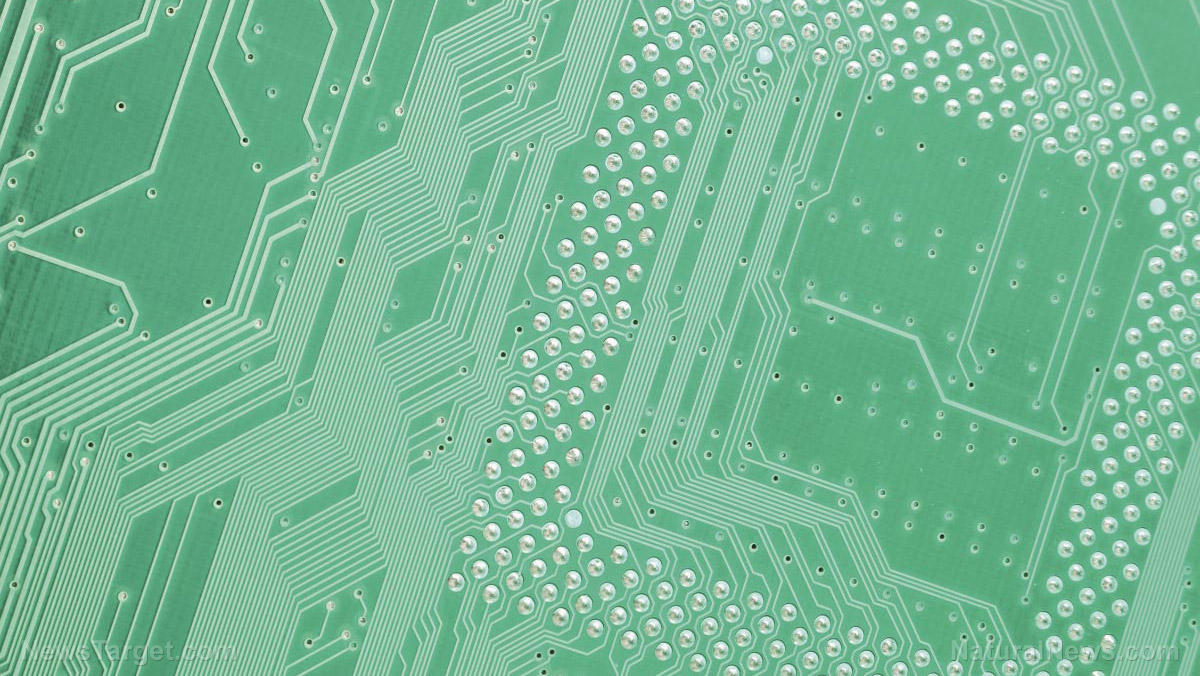Newly miniaturized dual frequency combs with two generators on a single chip could make spectroscopy portable and affordable
04/01/2018 / By David Williams

Frequency comb technology has just been improved in a major way thanks to a new study that was conducted by researchers from the Columbia University School of Engineering and Applied Science. The study, titled, “Dual frequency comb generated on a single chip using a single laser,” marks the first time that a highly compact, integrated, silicon-based chip is created for use in potentially extremely fast molecular spectroscopy.
According to a report on the study, the group of Columbia engineers behind the new invention are the first to successfully miniaturize so-called dual-frequency combs by putting two frequency comb generators on a one millimeter-sized silicon-based chip. It is said that it could potentially lead to low-cost, portable sensing and spectroscopy in real time, and could be the key to a number of different field applications.
A frequency comb is a special type of light beam that contains many different light frequencies. These are all spaced from each other precisely, and are representative of different “colors” that mark their key differences. When the frequency comb gets sent through a chemical specimen, some of its colors get absorbed by the molecules of the specimen. This makes it possible to identify any molecules in the specimen based on what colors have been absorbed.
The above technique is called frequency-comb spectroscopy, and it allows molecular fingerprinting. The invention of the researchers takes this technique to a higher level.
According to Avik Dutt, a post-doc scholar at Stanford University and lead author of the study, their method improves on the typical way of performing frequency-comb spectroscopy in a number of ways. “Dual-comb spectroscopy is this technique put on steroids,” he said. “By mixing two frequency combs instead of a single comb, we can increase the speed at which measurement are made by thousandfolds or more.”
It should be noted that the research team was not the first to discover or invent dual-comb spectrometers. They have been widely available for the last decade or so. The main difference is that conventional dual-comb spectrometers are usually bulky and not portable at all, whereas the type created by the researchers is said to be the smallest one ever. As the report on it states, it can easily be carried around and used for sensing and spectroscopy out in the field in real time, due to its size and portability. (Related: What would you like the Health Ranger to test next in our ICP-MS mass spectrometry laboratory?)
The innovation of the researchers lies in their successful attempt to two different frequency comb generators on just one millimeter-sized chip. And by using just a single laser to generate both frequency combs, they were able to reduce the experimental complexity while also removing the need for complicated electronics at the same time.
As a result of their method, they were able to create an effective tool for real-time detection of toxic chemicals in industrial areas, for monitoring the environment, and to implement occupational safety controls.
In testing, the researchers were able to show that real-time spectroscopy of the chemical dichloromethane at very high speed was possible, and over a broad frequency range, at that. To further improve their device’s performance, the researchers will work on broadening the frequency span of the dual combs next. They also intend to increase the resolution of the spectrometer to make it much more powerful in use.
The device invented by the researchers certainly shows plenty of promise as far as usefulness in the field is concerned. If they can integrate it into some other kind of portable device, it will be even more useful.
Read more about innovative devices in Inventions.news.
Sources include:
Tagged Under: dual-comb spectrometers, Dual-comb spectroscopy, electronic devices, electronics, frequency comb generator, future science, inventions, lab science, miniaturized dual frequency combs, molecular fingerprinting, molecular spectroscopy, portable spectroscopy, spectroscopy




















